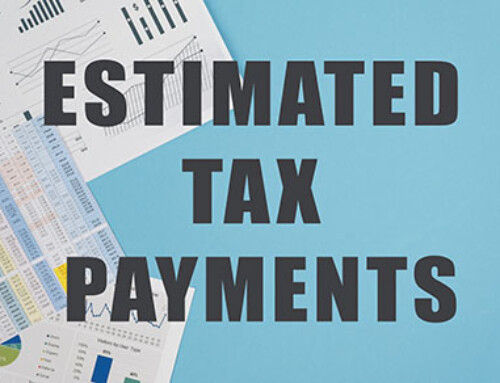The Tax Cuts and Jobs Act (TCJA) dramatically increased the unified federal gift and estate tax exemption from $5.49 million in 2017 to $13.61 million in 2024. If you’re married, you and your spouse have separate exemptions, for a total of $27.22 million for this year. Another inflation adjustment is scheduled for 2025.
If you’re wealthy enough to make cumulative lifetime gifts above the exemption amount, the excess is taxed at a flat 40% rate. If you pass away with an estate valued at more than the exemption amount, the excess is taxed at the same flat 40% rate. The flat tax rate is permanent under current law, unless Congress passes legislation to change it.
However, today’s favorable exemption amount is a limited-time offer. It’s scheduled to expire after 2025, unless Congress passes legislation to extend it.
If Congress allows the current gift and estate tax rules to expire in 2026 — or possibly sooner — you might want to make estate planning moves soon. Here are some answers to frequently asked questions that you may have about potential changes to the current rules.
What’s the Portable Exemption Privilege?
The unified exemption and 40% gift and estate tax rate are just two pieces of the estate planning puzzle. Another important factor is the federal gift and estate tax exemption portability privilege. Since 2011, this privilege has been available for married couples. That means if one spouse dies without using up his or her exemption, the surviving spouse can inherit the unused exemption amount.
For example, say Uncle Frank passes away this year without using up any of his $13.61 million exemption. He made no gifts during his lifetime. His surviving spouse, Aunt Sofia, inherits Uncle Frank’s unused exemption and adds it to her own exemption. So, for 2024, she has a unified federal gift and estate tax exemption of $27.22 million. Between now and year end, she could give away up to that amount with no federal gift tax liability. If Aunt Sophia dies before year end, her heirs could inherit up to $27.22 million with no federal estate tax liability.
What Are the Anti-Clawback Rules?
The IRS issued a final “anti-clawback” regulation in 2019. It allows post-2025 estates to calculate taxes based on the unified exemption in effect at the time large gifts were made if they’re made from 2018 through 2025, rather than using the smaller limit that may be in effect at the time of death.
Continuing with the previous example, suppose that Aunt Sophia gifts $20 million to family members in December 2024, then dies in 2026. If the gift and estate tax exemption sunsets to the pre-TCJA amount as scheduled under current law, the anti-clawback regs prevent the IRS from assessing federal estate tax on the difference between her lifetime gifts ($20 million) and the inflation-adjusted exemption that’s in place at the time of her death.
What Could Happen to the Gift and Estate Tax Rules in the Future?
Under current law, the unified federal gift and estate tax exemption will be adjusted next year for inflation, assuming Congress passes no legislation to the contrary. The flat tax rate on excess lifetime gifts and excess estate values will remain at 40%.
For 2026, the unified exemption for 2026 is scheduled to revert to the 2017 amount of $5.49 million, with a cumulative inflation adjustment for 2018 through 2025. The flat tax rate on cumulative lifetime gifts above the inflation-adjusted figure and estate values above that figure would remain at 40% unless future legislation dictates otherwise.
But there’s no guarantee that today’s favorable federal gift and estate tax rules will be allowed to survive after this year. It’s possible that Congress could retroactively change the rules for 2024. The current rules might be left standing, or they might be replaced with less favorable rules.
Possible outcomes include:
- The existing rules could remain in place through at least 2025, then the pre-TCJA rules could return in 2026, as scheduled.
- The existing rules could be extended past 2025.
- The portable exemption privilege could be eliminated.
- The sunset provision, which would take the exemption back to the 2017 level with a cumulative inflation adjustment, could be accelerated to start in 2024 or 2025.
Even worse, Congress could decide to revert to the historically unfavorable gift and estate tax rules that were in place in 2000 or 2009. (See “Snapshot of 21st Century Federal Gift and Estate Tax Rules,” below.) Back then, there was no portable exemption privilege.
What Steps Can You Take to Protect Your Wealth?
People with large estates may consider positioning themselves to make gifts before year end to substantially reduce the value of their estates. For example, Jack is age 85 and has a $10 million estate (excluding the value of his home). He has three financially responsible adult children. So, he could give them $5 million in assets in December 2024, pending the outcome of the November elections. His kids are aware of his plans and verbally agree to help him out in the future if necessary.
If elected officials pass unfavorable gift and estate tax rules, Jack can implement this plan and still have his home and $5 million in assets. In this scenario, if Congress successfully passes unfavorable tax rules, the damage to Jack’s estate will be minimized. However, if Congress passes legislation to retroactively change the rules for 2024, Jack will be out of luck.
Important: Some states impose death or inheritance taxes that kick in at thresholds below the unified federal gift and estate tax exemption amount. So, it’s essential to understand the rules in your state to do a thorough job of estate planning.
Stay on Top of Your Game
Proactive estate planning moves can help wealthy individuals hedge their bets in today’s uncertain tax environment. Contact your tax advisor before the end of the year to determine what’s right for your situation.
| Snapshot of 21st Century Federal Gift and Estate Tax Rules
The current gift and estate tax rules are the most favorable they’ve been in recent times. Here’s a look back at where the federal gift and estate tax rates and exemptions have been since 2000. Federal Gift and Estate Tax Rates and Exemptions for 2000 through 2015
* Federal gift and estate taxes are incurred on cumulative lifetime gifts above the exemption and estates valued in excess of the exemption. For 2010 only, estate executors were allowed to opt for a zero federal estate tax bill in exchange for giving up tax-basis step-ups for certain assets inherited by beneficiaries of the deceased individual. If you’re a New York Yankees fan, you might remember that the estate of former Yankees owner George Steinbrenner took advantage of that one-year deal after he died in 2010. |
| Making Annual Gifts
Under the federal gift tax exclusion privilege, you can make gifts of up to the annual exclusion amount — twice that per recipient if your spouse elects to split the gift with you or you’re giving community property — without using up any of your federal gift and estate tax exemption. For 2024, the annual gift exclusion is $18,000 per recipient. Important: You must use your annual exclusion by December 31 each year. The exclusion doesn’t carry over from year to year. For example, if you didn’t make an annual exclusion gift to your son in 2023, you can’t add last year’s unused exclusion to this year’s exclusion to make a larger tax-free gift to him in 2024. |






